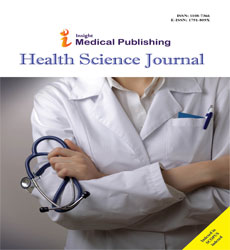Abstract
Acute Risk in Helicopter Emergency Medical Service Transport Operations
Objective: The highest safety risk for helicopter emergency medical service (HEMS) operations in the United States is during night-time operations. Although guidelines recommend physicians consider the risk to the patient and flight crew when triaging a patient for flight, no objective measure of risk between day and night-time HEMS flights exist. The purpose of this study was to measure the acute risk of HEMS transport within a spectrum of aviation and medical procedure risk.
Methods: The number of fatal HEMS accidents, fatal patient injuries and patients transported by day and night between 1995 to 2015 were classified as events and measure of activities, respectively. Acute risk was measured using the MicroMort (mM) which represents a one in a million chance of dying from an accident. Comparisons with other activities were used to contextualize aviation and medical procedure risk.
Results: Each daytime HEMS task (7.55 mM) was similar to one parachute jump (7.96 mM). One night-time HEMS task in hazardous operational conditions (18.75 mM) was over ten-times greater than one scuba dive (1.84 mM). Patient night-time mortality (6.43 mM) was similar to one general anaesthetic (8.2 mM).
Conclusion: Daytime HEMS accident risk is of similar risk to one parachute jump, and at night-time in hazardous operational conditions over ten-times greater than one scuba dive. Where a patient’s risk of death from their injury or illness is not greater than that of a general anaesthetic, triage for a night HEMS transport may introduce greater risk than the patient’s medical condition itself.
https://transplanthair.istanbul
https://hairclinicturkey.co
https://hairclinicistanbul.co
https://besthairtransplant.co
https://hairtransplantistanbul.co
Author(s):
Bryan Aherne, David Newman and Won Sun Chen
Abstract | Full-Text | PDF
Share this

Abstracted/Indexed in
- Google Scholar
- Genamics JournalSeek
- China National Knowledge Infrastructure (CNKI)
- CiteFactor
- CINAHL Complete
- Scimago
- Electronic Journals Library
- Directory of Research Journal Indexing (DRJI)
- EMCare
- WorldCat
- University Grants Commission
- Geneva Foundation for Medical Education and Research
- Secret Search Engine Labs
- Euro Pub
Open Access Journals
- Aquaculture & Veterinary Science
- Chemistry & Chemical Sciences
- Clinical Sciences
- Engineering
- General Science
- Genetics & Molecular Biology
- Health Care & Nursing
- Immunology & Microbiology
- Materials Science
- Mathematics & Physics
- Medical Sciences
- Neurology & Psychiatry
- Oncology & Cancer Science
- Pharmaceutical Sciences

